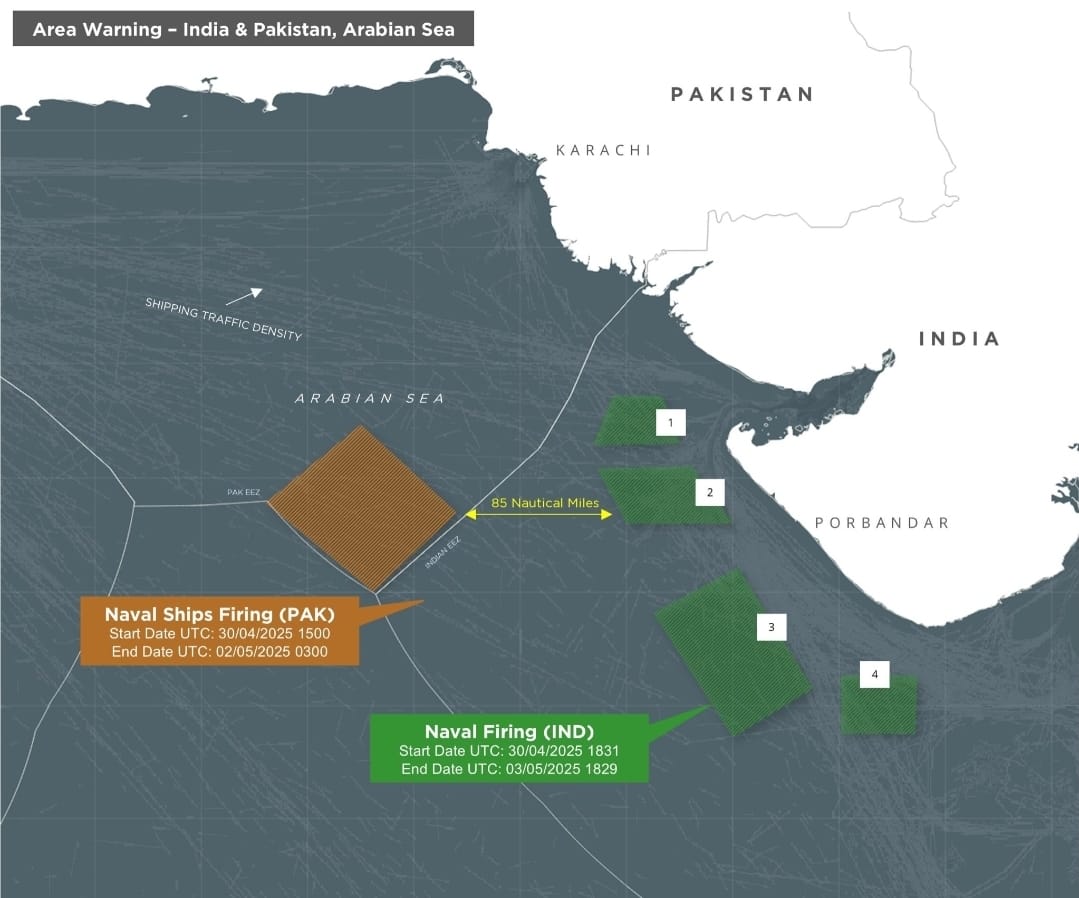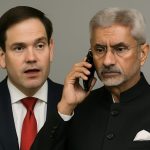Military friction between India and Pakistan reached a new high as both nations launched simultaneous naval exercises in the Arabian Sea, raising alarms over potential miscalculations in one of the world’s most strategic and contested maritime regions.
India issued four navigational warnings (NOTAMs) for naval firing drills off the Gujarat coast, running from April 30 to May 3, just 85 nautical miles from the areas where Pakistan is conducting its own exercises from April 30 to May 2. The proximity of these exercises, amid surging regional tensions, is unprecedented and has prompted concerns among defense analysts and the international community alike.
The latest escalation follows the April 22 terror attack in Pahalgam, Jammu and Kashmir, which claimed 26 lives. India has squarely blamed Pakistan-backed militants for the attack, drawing sharp rebukes from Islamabad, which denies the allegations. In response, both nations have engaged in a series of retaliatory moves: Pakistan closed its airspace to Indian airlines on April 24, and India reciprocated on April 30, further severing diplomatic and economic links.
India’s naval drills are believed to feature high-precision weaponry, including the BrahMos supersonic cruise missile with a 350 km range—capable of reaching deep into Pakistani waters. Experts view these actions as a demonstration of India’s readiness to project maritime dominance and defend its territorial and strategic interests.
Defense observers note that while Pakistan routinely conducts naval exercises, often in tandem with China through the Sea Guardian series, this close coordination near Indian waters marks a significant shift. The overlap raises the stakes, especially given the Arabian Sea’s proximity to key shipping lanes vital for global commerce.
“The potential for miscommunication or miscalculation in such tight proximity is dangerously high,” said a senior Indian naval analyst. “This is more than saber-rattling—it’s a clear message to Pakistan and the broader region.”
The developments come at a time when India’s internal focus is also shifting. At a Cabinet press conference on April 30, the government announced plans for a caste-based census, new infrastructure projects in the Northeast, and support measures for sugarcane farmers. However, the shadow of conflict with Pakistan looms large over the public discourse.
Global stakeholders, including the United Nations and major powers, have urged restraint, warning that an escalation could disrupt commercial shipping routes, threaten regional stability, and potentially involve broader geopolitical players.
As both nations dig into hardline positions—with India vowing retribution for the Pahalgam attack and Pakistan rejecting any culpability—the Arabian Sea may emerge as a new maritime flashpoint in the long-standing India-Pakistan rivalry. Diplomats face a difficult task ahead in de-escalating the crisis before a spark triggers a wider conflict.













